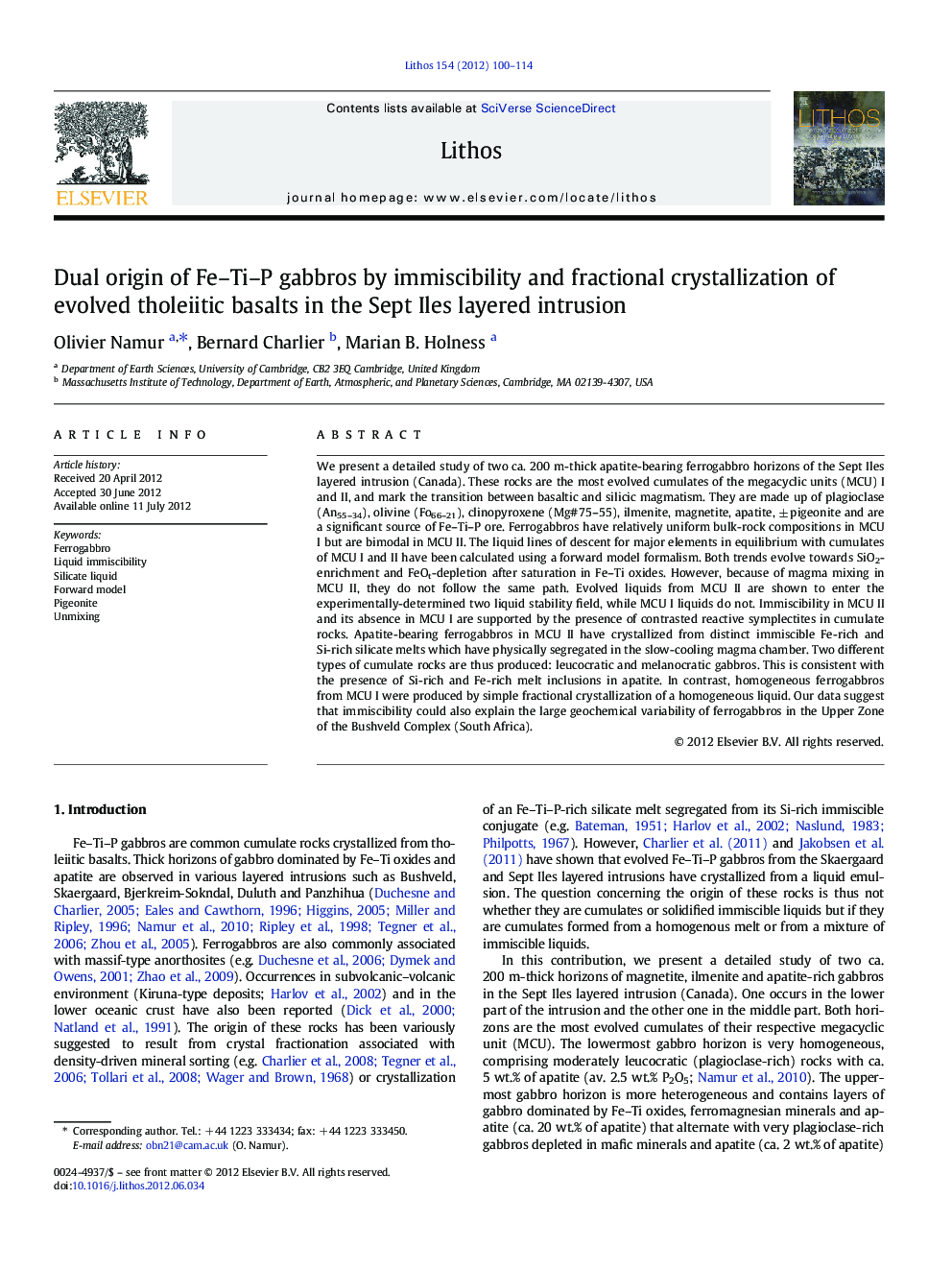| Article ID | Journal | Published Year | Pages | File Type |
|---|---|---|---|---|
| 4716399 | Lithos | 2012 | 15 Pages |
We present a detailed study of two ca. 200 m-thick apatite-bearing ferrogabbro horizons of the Sept Iles layered intrusion (Canada). These rocks are the most evolved cumulates of the megacyclic units (MCU) I and II, and mark the transition between basaltic and silicic magmatism. They are made up of plagioclase (An55–34), olivine (Fo66–21), clinopyroxene (Mg#75–55), ilmenite, magnetite, apatite, ± pigeonite and are a significant source of Fe–Ti–P ore. Ferrogabbros have relatively uniform bulk-rock compositions in MCU I but are bimodal in MCU II. The liquid lines of descent for major elements in equilibrium with cumulates of MCU I and II have been calculated using a forward model formalism. Both trends evolve towards SiO2-enrichment and FeOt-depletion after saturation in Fe–Ti oxides. However, because of magma mixing in MCU II, they do not follow the same path. Evolved liquids from MCU II are shown to enter the experimentally-determined two liquid stability field, while MCU I liquids do not. Immiscibility in MCU II and its absence in MCU I are supported by the presence of contrasted reactive symplectites in cumulate rocks. Apatite-bearing ferrogabbros in MCU II have crystallized from distinct immiscible Fe-rich and Si-rich silicate melts which have physically segregated in the slow-cooling magma chamber. Two different types of cumulate rocks are thus produced: leucocratic and melanocratic gabbros. This is consistent with the presence of Si-rich and Fe-rich melt inclusions in apatite. In contrast, homogeneous ferrogabbros from MCU I were produced by simple fractional crystallization of a homogeneous liquid. Our data suggest that immiscibility could also explain the large geochemical variability of ferrogabbros in the Upper Zone of the Bushveld Complex (South Africa).
► Contrasting types of ferrogabbros occur in the Sept Iles layered intrusion. ► Forward modeling supports two different liquid lines of descent. ► Immiscibility produces bimodal cumulates: Fe–Ti–P-rich vs. plagioclase-rich. ► Fractional crystallization produces homogeneous gabbros. ► Our results suggest that immiscibility occurred in the Upper Zone of the Bushveld Complex.
